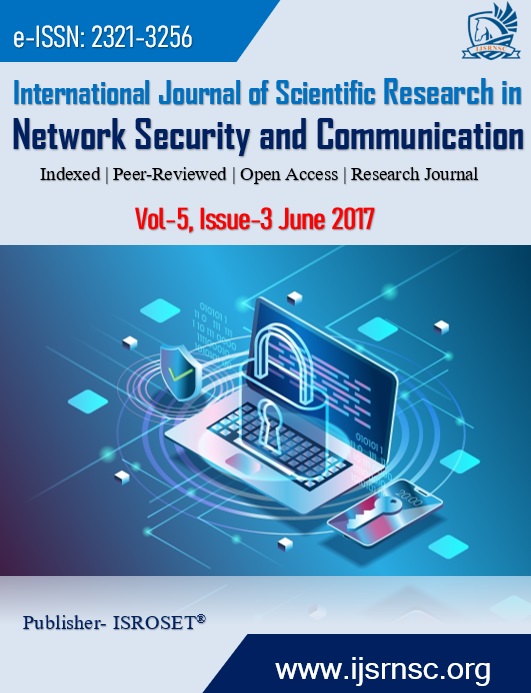Sentiment Analysis of Twitter Streaming Data for Recommendation using, Apache Spark
Keywords:
Big data, classification, Map-ReduceAbstract
Twitter is free social networking micro blogging service. In that micro-blogging allows to registered members to broadcasting the short posts also called tweets. It can broadcast the tweets by using multiple platforms and devices. Twitter member replies to tweets. Existing system focuses on document level sentiment analysis that means they used Hadoop Framework for concerning moving or product reviews. In that system web pages or blocks on which posts are published therefore in that system complexity of document level opinion mining many efforts have been made towards the sentence level sentiment analysis. The existing systems classify the accuracy only one word. This process is time consuming due to documentation. In the system which we are devolve in that we used spark framework instead of Hadoop framework. Due to the use of Spark Framework, garbage or unclean data are removing. So that user gets better efficiency and less time required for processing, than earlier system.
References
A. I. Baqapuri, S. Saleh, M. U. Ilyas, M. M. Khan, A. M. Qamar, "Sentiment classification of tweets using hierarchical classification", 2016 IEEE International Conference on Communications (ICC), Malaysia, pp.1-7, 2016.
Tumasjan A, Sprenger TO, Sandner PG, Welpe IM, “Predicting elections with twitter: What 140 characters reveal about political sentiment”, Icwsm Vol.10, Issue.1, pp.178-85, 2010.
R.V. Patil, S.S. Sannakki, V.S. Rajpurohit, "A Survey on Classification of Liver Diseases using Image Processing and Data Mining Techniques", International Journal of Computer Sciences and Engineering, Vol.5, Issue.3, pp.29-34, 2017.
Madnani N, “Getting started on natural language processing with Python”, Crossroads, Vol.13, Issue.4, pp.5-9, 2007.
B. Pang, L. Lee, S. Vanity Nathan, “Sentiment classification using machine learning techniques”, In Proceedings of the ACL-02 Conference on Empirical Methods in Natural Language Processing, Vol.5, Issue.4, pp.79-86, 2002.
Y. Yamamoto, T. Kumamoto, A. Nadamoto, “Role of emotions for multidimensional sentiment analysis of twitter”, In Proceedings of the 16th International Conference on Information Integration and Web-based Applications, USA,pp.107-115, 2014.
V. N. Khuc, C. Shivved, R. Namath, and J. Ramayana., ”Towards building large-scale distributed systems for twitter sentiment analysis”, .In Pro-ceedings of the 27th Annual ACM Symposium on Applied Computing, pages 459-464, 2012.
Dean J, Ghemawat S. “MapReduce: simplified data processing on large clusters”, Communications of the ACM, Vol.51, Issue.1, pp.107-113, 2008.
L. Zhuang, F. Jing, X.-Y. Zhu, “Movie review mining and summa-rization”, In Proceedings of the 15th ACM International Conference on Information and Knowledge Management, USA, pp.43-50, 2006.
W. Zhang, C. Yu, W. Men, “Opinion retrieval from blogs”, In Proceedings of the Sixteenth ACM Conference on Conference on Information and Knowledge Management, USA, pp.831-840, 2007.
T. Wilson, J. Wienie, P. Ho Mann, “Recognizing contextual polarity in phraselevel sentiment analysis”, In Proceedings of the Conference on Human Language Technology and Empirical Methods in Natural Language Processing, USA, pp.347-354, 2005.
T. Wilson, J. Wienie, P. Ho Mann, “Recognizing contextual polarity: An exploration of features for phrase-level sentiment analysis”, Com put. Linguist, USA, pp.399-433, 2009.
Neetu Anand, Tapas Kumar , "Text and Emotion Analysis of Twitter Data", International Journal of Computer Sciences and Engineering, Vol.5, Issue.6, pp.181-285, 2017.
H. Yuh, V. Huitzilopitchli, “Towards answering opinion questions: Separating facts from opinions and identifying the polarity of opinion sentences”, In Proceedings of the 2003 Conference on Empirical Methods in Natural Language Processing, USA, pp.129-136, 2003.
Downloads
Published
How to Cite
Issue
Section
License

This work is licensed under a Creative Commons Attribution 4.0 International License.
Authors contributing to this journal agree to publish their articles under the Creative Commons Attribution 4.0 International License, allowing third parties to share their work (copy, distribute, transmit) and to adapt it, under the condition that the authors are given credit and that in the event of reuse or distribution, the terms of this license are made clear.









